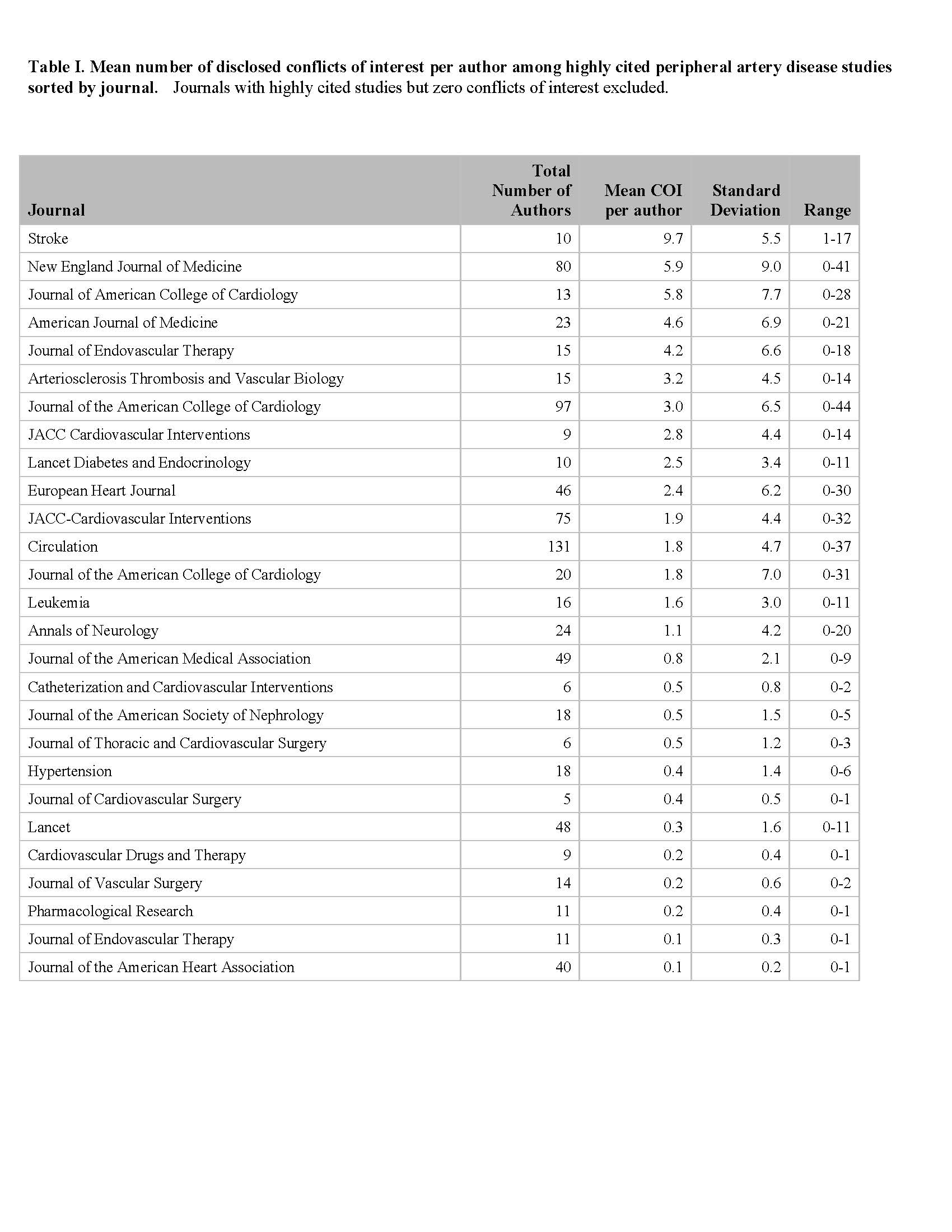Scope and Prevalence of Conflicts of Interest Among Highly Cited Peripheral Artery Disease Research Studies
Tiffany R Bellomo, Charles Hwang, Matthew A Corriere
University of Michigan Health System, Ann Arbor, MI
INTRODUCTION: Conflicts of interest (COI) potentially influence interpretation of study results for both authors and journal readers. Scientific journals often require author disclosure of relevant conflicts, but this is usually by self-report and seldom includes detailed quantification of reimbursement. The purpose of this analysis was to characterize COI among highly cited research studies related to peripheral artery disease (PAD) in terms of prevalence, quantity of reimbursement, and associations with manuscript characteristics.
METHODS: Highly cited PAD publications from 2012-2017 were identified through a Web of Science search using "peripheral artery disease". Results were then sorted by number of times cited from highest to lowest. Review articles and non-English language publications were excluded. The top 100 most-cited publications were then abstracted for disclosed COI by author. Manuscripts were characterized as basic science or clinical, and clinical publications were subcategorized as observational, medical interventions, or procedural interventions. Disclosures by U.S. authors were queried using the ProPublica Dollars for Docs search tool (linked to Centers for Medicare and Medicaid Services Open Payments data) based on provider name, specialty, and geographic location. Statistical analysis included descriptive statistics and categorical tests, including chi-square.
RESULTS: Included publications were cited a mean of 124 ± 200.5 times and had a total of 1137 named authors. A mean of 1.6 ±4.8 disclosed COI per author were identified. Prevalence of disclosed COI was significantly higher for clinical vs. basic science studies (32.1% vs. 4.2%; P<0.0001). Among the top ten articles by highest mean number of disclosures per author, the median open payment amount among authors reporting COI was $121,500 (range $22-$2,630,000), while a total of $1,584,727 in non-disclosed open payments were identified from authors reporting no COI (median $24,573; range $12 - $457,000). Disclosed COI sorted by journal are shown in Table I.
CONCLUSIONS: Significant COI were identified among highly cited PAD studies, although the majority of authors reported none. Disclosed COI are significantly more prevalent among clinical versus basic science studies. Authors may have substantial non-disclosed compensation from industry that may be relevant to study results and interpretation. These results suggest that author self-reported COI may be conservatively biased. Readers should consider potential COI, including quantity of author compensation, when interpreting study results. 
Back to 2019 Abstracts
